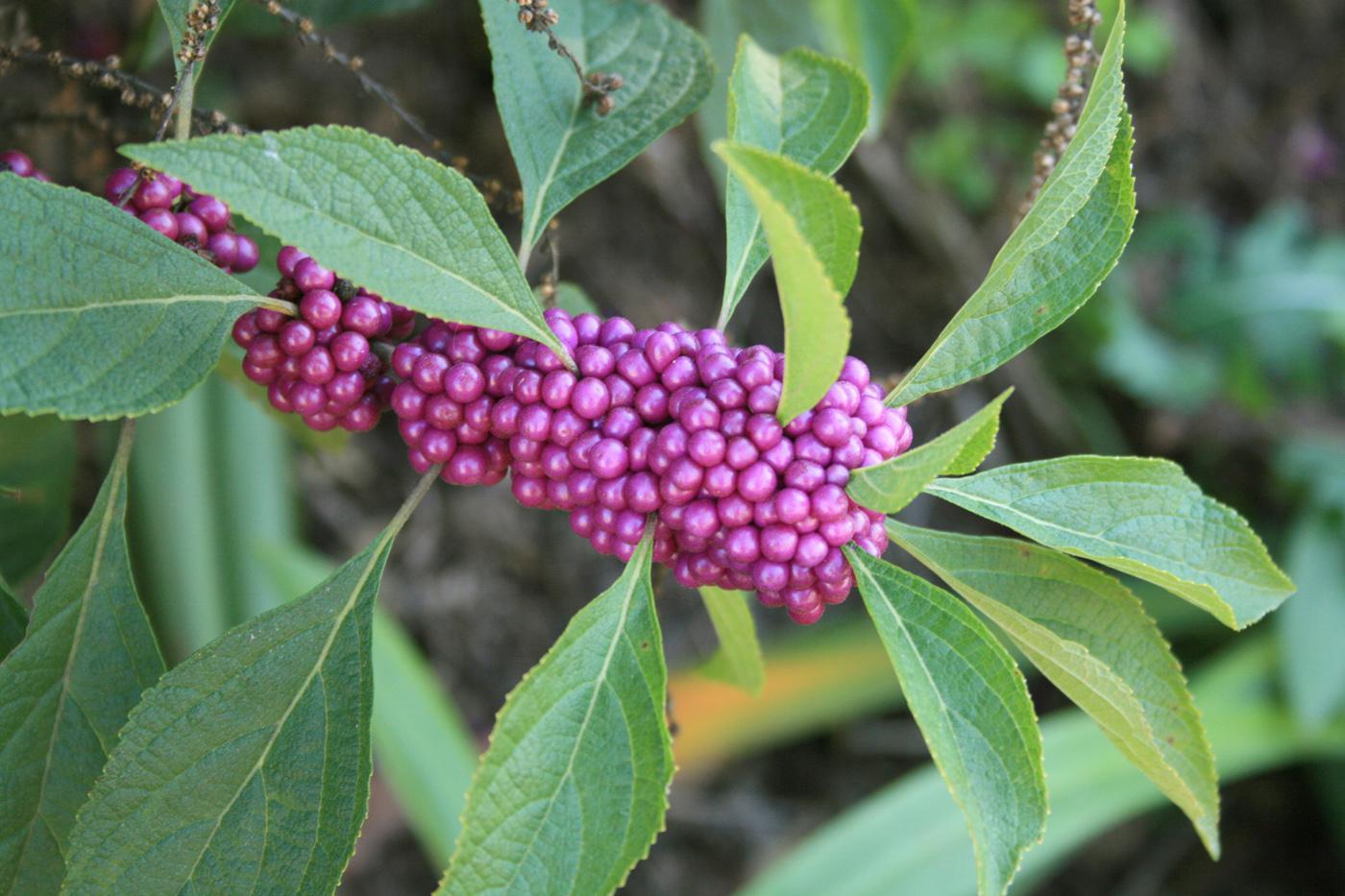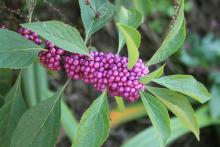Information Possibly Outdated
The information presented on this page was originally released on October 18, 2011. It may not be outdated, but please search our site for more current information. If you plan to quote or reference this information in a publication, please check with the Extension specialist or author before proceeding.
American Beautyberry gives colorful fall show
If you want something besides leaves to provide fall landscape color, take a good look at the American beautyberry. This Mississippi native shrub lives up to its name by putting on quite a show in the fall, with its clusters of bright purple berries.
Known botanically as Callicarpa americana, American beautyberry is frequently found on the edges of woodlands all across Mississippi. It is widely distributed east of the Mississippi River in the mid-Atlantic and Gulf Coast region. American beautyberry is also quite at home in the landscape.
Other species of beautyberry mature to different sizes and have different berry arrangements. In garden centers and nurseries, all are labeled beautyberry.
Beautyberry is a deciduous plant that creates three seasons of interest. In the spring, small pink flowers appear in the leaf axils of the paired leaves. Although these flowers are inconspicuous, they play an important role later in the season.
The rich green summer foliage is a good background for summer-blooming perennials and shrubs. In the fall, beautyberry is a member of Mother Nature’s color chorus as its leaves transform into a deep, rich purple.
But in the fall and winter, the berries are the real show. Berries are a bright, shiny purple and are arranged in clusters at the leaf nodes all along the arching stems. The purple berries appear to have a metallic quality when the sunlight reflects off them.
Beautyberries come in purple, white and pink varieties. You may have to search hard for some of these varieties, but start with your local nursery.
If you like variegated plants, beautyberry even has a variegated selection called Duet that has white berries. This is the only stable variegated beautyberry in the nursery trade. Check local nurseries for availability.
American beautyberry will grow up to 4 feet tall and wide. In north Mississippi, it may die back to the ground in severe winters. It is a good practice to prune the plant back in early spring to about 6 inches to create a fuller, more compact plant.
Beautyberry has a loose and open habit. One plant can be attractive, but a grouping of three will create a full cluster. The plants will cross-pollinate to ensure the fullest berry production.
Beautyberry tolerates dry soil and part shade, but the healthiest plants and best fruit presentation come from those in full sun. Maintain consistent soil moisture for best results.
A good way to use beautyberry is to tuck it behind fall-blooming plants. It creates a soft background during the summer months and dazzles in the fall with its metallic berries.
So find a place for beautyberry in your landscape. It will certainly live up to its name and add beauty to any fall garden.








